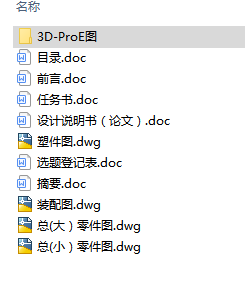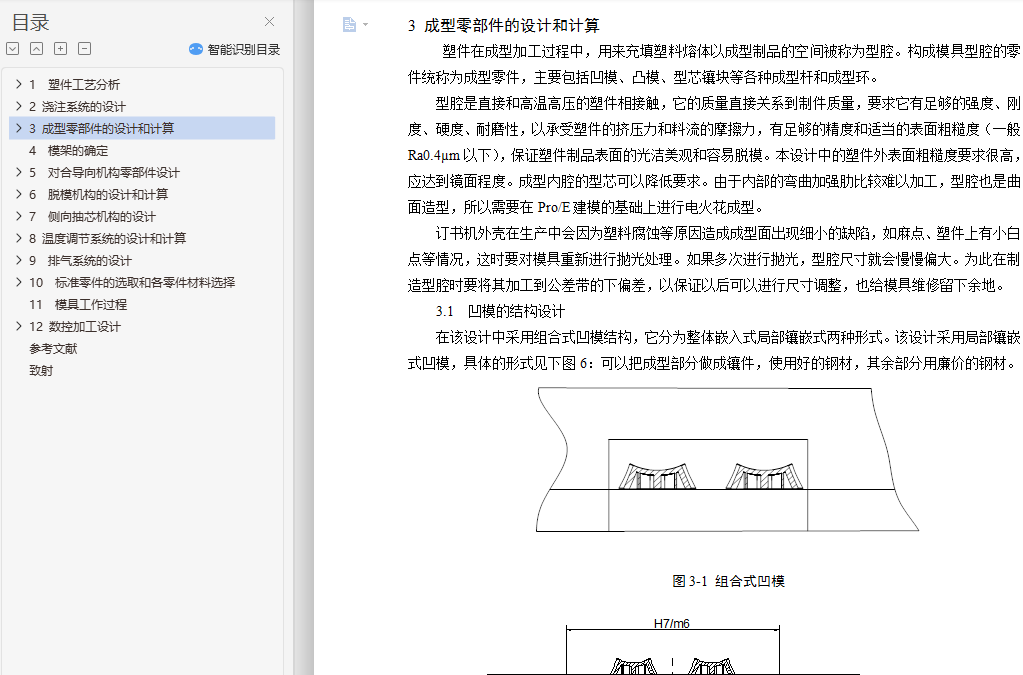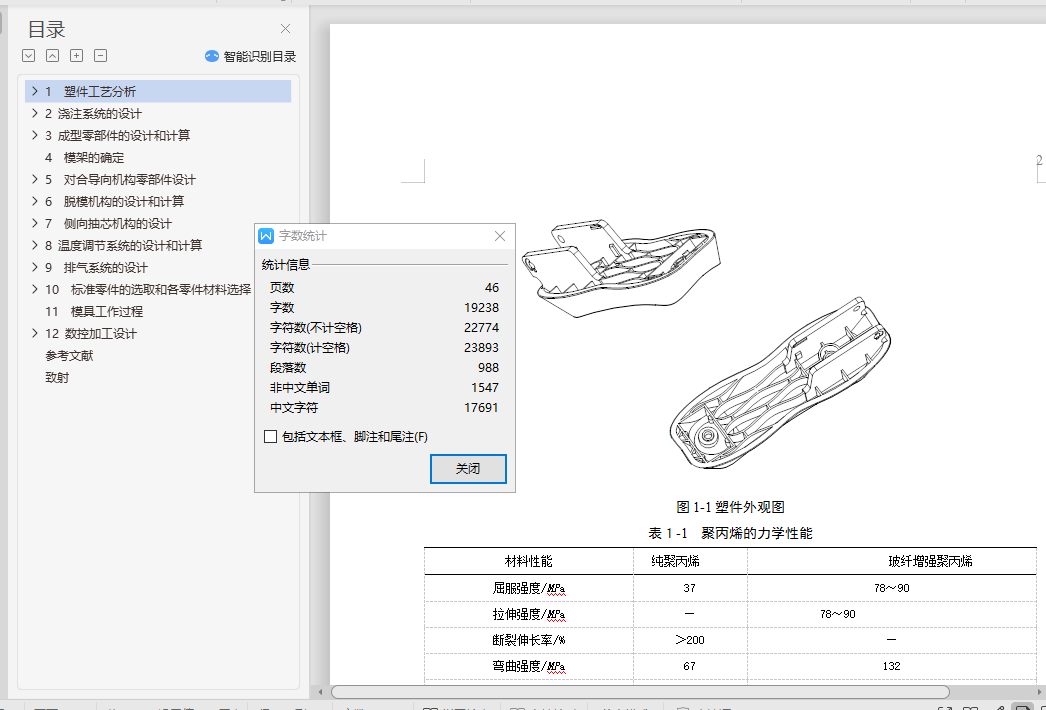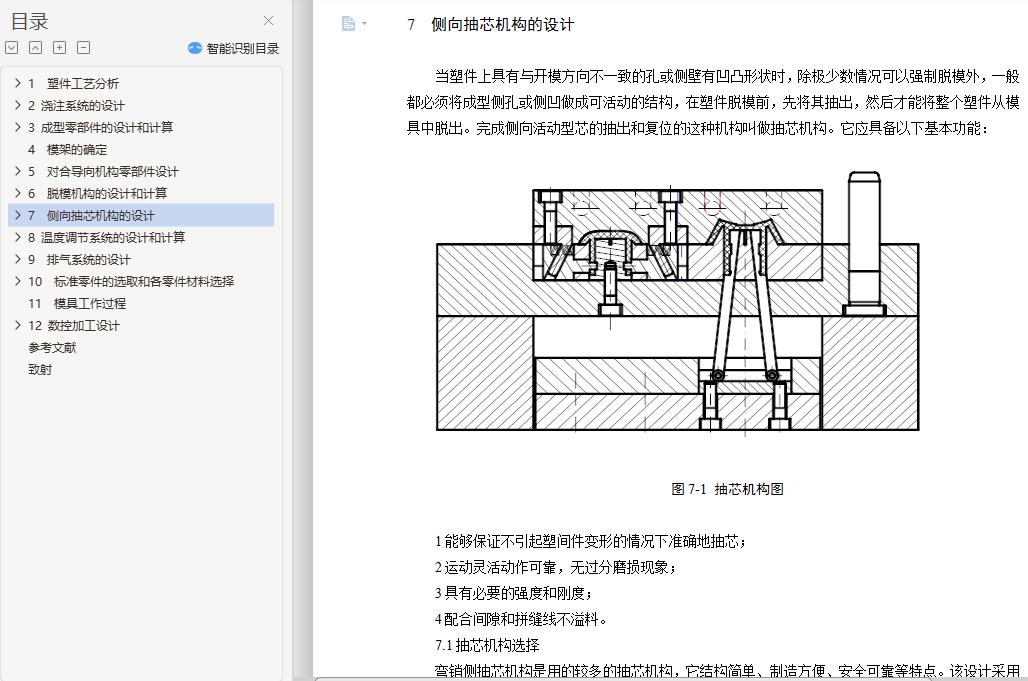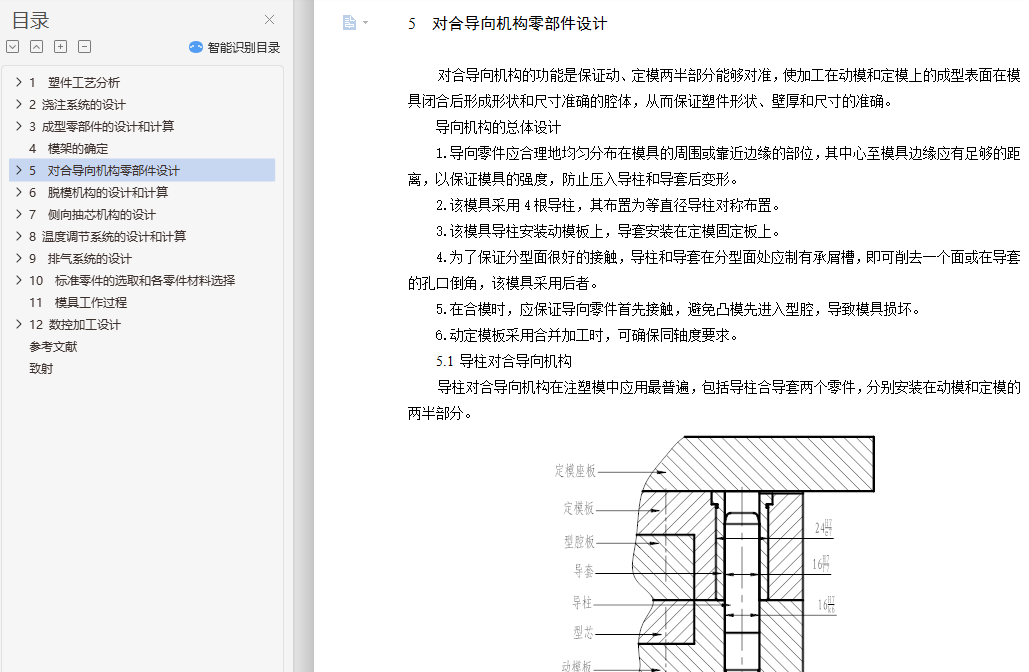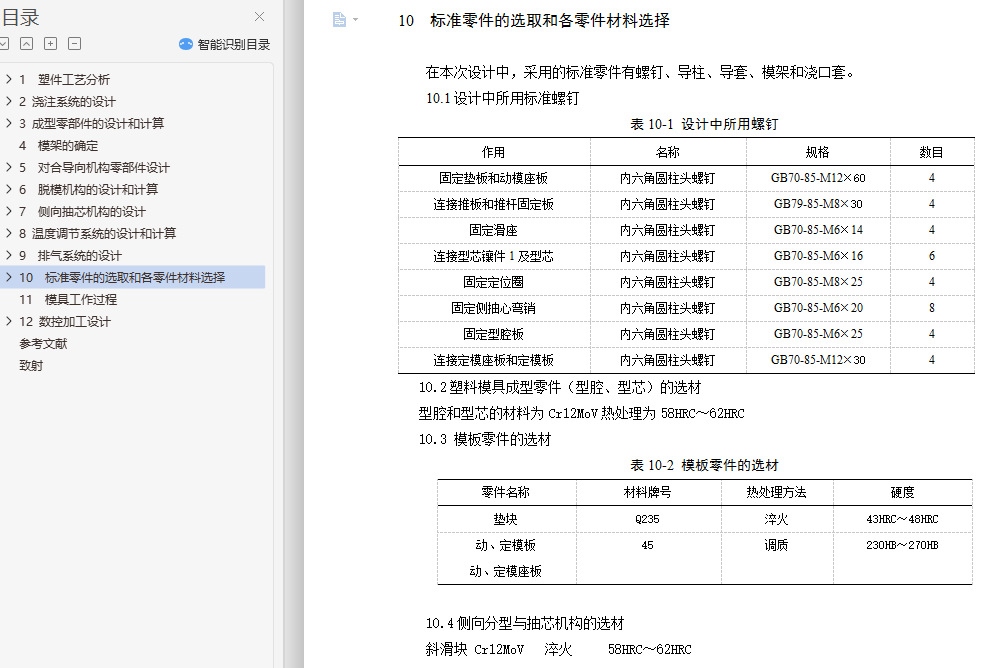订书机外壳注射模设计
摘要:本毕业设计说明书详细介绍订书机外壳塑件的注射模设计。主要内容是材料(聚丙稀PP)特性分析,塑料注射模的结构设计、标准件的选择、模具材料选择、典型零件的数控加工3G程序代码编程设计。该塑件外表面要求达到境面,内部有弯曲的加强肋,底部进行文字加工,不但有外侧抽芯成型两个圆柱孔、两个半圆柱孔及圆柱孔旁边的浅孔,还有内侧抽芯成型内部四个突台。外侧抽芯距离短,模架小,在型腔板上固定弯销来实现侧抽芯。由于塑件中部有两不易成型的圆肋,采用了增加两个小型芯镶件的办法减少加工模具的难度。整体外形为曲面,不能用传统的加工工艺,而是在Pro/E建模的基础上电火花成型。
关键词: 订书机外壳;注射模设计;侧抽芯;曲面
The Design of the Book Sewer outside Shell Injection Mold
Abstract: This graduate design instruction book has introduced the design of the book sewer outside shell injecting molding in detail. It mainly contains the analysis of property of the material (polypropylene PP), the structural design of injection mold, the selection of standardized part and the material of injection mold, the 3G code NC part programming for typical part. The surface of this plastic part should be mirror finished. The inside of it has bending reinforcing rib. The bottom of it should be worked with words. It not only has two cylindrical pore、two half cylindrical pore and short-hole beside the cylindrical pore that should be formed by outside extracting part, but also has four lug formed by inside extracting part. The distance of extracting is short and the mould is small, so fixing angle block on the cavity die is to finish outside extracting. Because the inside of the plastic part has two round ribs that are difficult to be formed, two inserts are added to make it easier to form mold. The integral surface is camber. It can’t be formed by conventional job operation, so spark machine is needed to form it on the basis of Pro/E molding foundation.
Key words : book sewer; design of injection mold; outside extracting; camber
目录
1 塑件工艺分析 ………………………………………………………………………
1.1塑件分析…………………………………………………………………………
1.2塑件材料成型特性分析…………………………………………………………
1.3脱模斜度…………………………………………………………………………
1.4拟定模具的结构形式……………………………………………………………
1.4.1型腔数量的确定……………………………………………………………
1.4.2模腔排列形式的确定………………………………………………………
1.5注射机型号的确定………………………………………………………………2
1.5.1注射计算……………………………………………………………………
1.5.2锁模力的计算………………………………………………………………
1.5.3选择注射机…………………………………………………………………
1.6注射有关参数的校核………………………………………………………………
1.6.1锁模力的校核………………………………………………………………
1.6.2型腔数目的校核……………………………………………………………
1.6.3开模行程的校核……………………………………………………………
2 浇注系统的设计………………………………………………………………………
2.1主流道的设计……………………………………………………………………
2.2主流道衬套的设计………………………………………………………………
2.3分流道的设计……………………………………………………………………
2.4冷料穴的设计……………………………………………………………………
2.5浇口形式的设计…………………………………………………………………
2.6分型面的设计……………………………………………………………………
2.7排气槽的设计……………………………………………………………………
3 成型零件的设计和计算………………………………………………………………
3.1凹模的结构设计…………………………………………………………………
3.2凸模的结构设计…………………………………………………………………
3.3型芯安装固定形式………………………………………………………………
3.4成型零件工作尺寸的计算………………………………………………………
3.5型腔壁厚计算……………………………………………………………………
3.6矩形模具动模垫块厚度计算………………………………………………………
4 模架的确定……………………………………………………………………………
4.1确定定模座板……………………………………………………………………
4.2确定定模板………………………………………………………………………
4.3确定垫块…………………………………………………………………………
4.4确定动模座板……………………………………………………………………
4.5确定推板…………………………………………………………………………
4.6确定推杆固定板……………………………………………………………………
5 对合导向机构零部件设计………………………………………………………………
5.1导柱对合导向机构………………………………………………………………
5.1.1导柱设计……………………………………………………………………
5.1.2导柱尺寸……………………………………………………………………
5.1.3导柱的布置…………………………………………………………………
5.2导套的设计………………………………………………………………………
6 脱模机构的设计和计算………………………………………………………………
6.1脱模机构的设计……………………………………………………………………
6.2脱模机构的计算……………………………………………………………………
7 侧向抽芯机构的设计……………………………………………………………………
7.1抽芯机构选择………………………………………………………………………
7.2抽芯机构计算………………………………………………………………………
8 温度调节系统的设计和计算…………………………………………………………
8.1加热系统……………………………………………………………………………
8.2冷却系统的设计………………………………………………………………………
8.3冷却系统的简略计算………………………………………………………………
8.4冷却装置的布置…………………………………………………………………
9 排气系统……………………………………………………………………………… 35
9.1排溢的影响…………………………………………………………………………35
9.2引气的影响…………………………………………………………………………35
9.3排气的方式…………………………………………………………………………36
10 标准零件的选取和各零件材料选择………………………………………………… 36
10.1设计中所用的标准螺钉………………………………………………………… 36
10.2塑料模具成型零件的选材…………………………………………………………
10.3模板零件的选材……………………………………………………………………
10.4浇注系统零件的选材………………………………………………………………
10.5导向零件的选材……………………………………………………………………
10.6侧向分型与抽芯机构的选材…………………………………………………………
10.7其他零件的选材……………………………………………………………………
11 模具工作过程…………………………………………………………………………
12 数控加工设计…………………………………………………………………………
12.1数控机床程序编制的内容与步聚……………………………………………………
12.2数控加工工艺…………………………………………………………………………
12.3具体加工程序…………………………………………………………………………
参考文献…………………………………………………………………………………………
致谢……………………………………………………………………………………………
